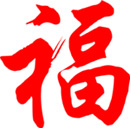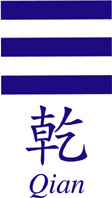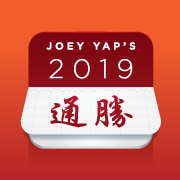 The Yi Jing is known generally as the Book of Changes, and claimed to be the oldest of the Chinese classic texts.
The Yi Jing is known generally as the Book of Changes, and claimed to be the oldest of the Chinese classic texts.
It describes and ancient system of cosmology and philosophy which is known to be the heart of all Chinese science, culture and way of life.
The philosophy centers on the ideas of the dynamic balance of opposites, the evolution of events as a process, and the acceptance of the inevitability of change.
However, to many in Western cultures, the Yi Jing is seen only as a system of divination.
The Yi Jing is one of the five classics in the Confucian cannon. It is a collection of texts of philosophy and divination based on a set of 64 hexagrams comprising various combinations of broken and unbroken lines reflecting the relationship between the two basic forces of the universe, natures and human society – yin and yang.
Unfortunately, this well-known classical Chinese text has been used to derive a variety of modern day superstitions and a lot of “feng shui symbology”.
Here, I take the opportunity to address the issue of the extent in which feng shui, be it Classical or New Age feng shui, draws on the Yi Jing and also to explain the role in which the placement of objects and symbols plays in feng shui .
First things first – it's not the I-Ching . This is frequently used but incorrectly written term appearing in Western books that romanised Chinese words using the old Wade-Giles format, dictates it should be spelt as Yi-Jing .
It may sounds trivial but I feel it is important to start off correctly by pronouncing and spelling it properly.
Origins of the Yi Jing
The Yi Jing originally started out as a philosophy. It began in the Shang Dynasty (1600 – 1045 BCE) and was intended to be a sort of manual on life, a guide on how to conduct oneself, morally and ethically, and to effectively rule a country.
This was especially prominent during the times of Confucius where the Yi Jing formed the majority of his teachings. This was many thousands of years ago and you do need to maintain that perspective when thinking about the Yi Jing.
Later, during the time of King Wen (Zhou Dynasty: 1045-221 BCE), the Yi Jing was given a fresh perspective – some of its principles were transformed into a divination science.
Hence, the famous “Ten Wings of Yi” were born. It was also during this time that the method of divination known as Zhou Ji came to be and was made part of the Yi Jing .
To effectively accomplish this – at a time when education was privilege – the originals images and symbols of the Yi Jing were removed and only the concept and mathematical aspects were maintained, and used to extract information about times, space, probabilities and events.
The original Yi Jing is a book on Philosophy. Yi means “change” and Jing means “classics” or “sutra”.
When the concept from Yi Jing was later borrowed to develop the divination science of King Wen, it came to be known as Yi Gua.
Today, the Yi Gua method is known as Jin Qian Gua (Turtle Shell + Coins Divination Method).
Yi Jing and feng shui
Many feng shui practitioners like to say feng shui is “derived” from the Yi Jing – this statement is not entirely correct.
You see, if you trace it far back enough, almost every type of Chinese study from the Chinese Five Arts (Mountain, Medical, Divination, Destiny and Physiognomy) has come connection to or roots in the Yi Jing .
The science of feng shui is derived from the concept of Yi but it is not based entirely on the Yi Jing principle simply because the Yi Jing is a philosophical book of a divination science. Feng shui is neither.
Schools of feng shui such as Xuan Kong Da Gua, Xuan Kong Fei Xing, Ba Zhai, San Yuan and San He have principles founded on key elements of mathematical science like that of yin and yang , the five elements and the hexagrams and triagrams. But these are derived from the concept of Yi and not verbatim translation from the Yi Jing texts themselves.
The concept of feng shui is all about qi in our environment – how to derive and harness it to benefit us by making use of our property to tap onto this qi .
This is the key goal of feng shui . We should not forget this. Whereas the Yi Jing texts today are either primarily a philosophy (the Tao) or a divination science. It does not directly address feng shui concerns.
Yi Jing Imagery vs feng shui science
Many of the modern day New Age feng shui ideas are supposedly derived from the image of the Ba Gua (eight trigrams).
What has happened is imagery that was once used as a “teaching aid” or aide-de-memoir has been converted into the Real McCoy.
Images of the Ba Gua of the Yi Jing are supposed to be used to help students or feng shui practitioners appreciate how qi works in a visual way.
So for example, the hexagram Qian is represented as Dragon Flying into the Sky.
The idea is to help people appreciate that Qian Gua refers to qi that rises upwards and/or a type of qi that is very strong “like” a dragon flying into the sky.
Along the way, this simple teaching aid has been corrupted into symbology and superstition.
Now, as much as we would like to believe that a figurine of a Dragon Flying in the Sky means Qian Gua in fact, what you have in your back garden is just a teaching aid.
It has no energy of any kind and it certainly does not bring about the qi associated with Qian Gua to that part of your home.
Images or symbols in the Yi Jing are metaphors used to describe a scenario. They are not to be taken literally.
Of course, this is not to say there is entirely no symbology in feng shui . The Hu Lu (or Calabash – a type of fruit) is a good example of this.
The Hu Lu (the natural kind, not the 32 karat gold or plastic kind) symbolizes Dui Gua, because of its natural shape and its opening.
Dui Gua , in feng shui terminology, is the number 7. It is for this reason that the Hu Lu is said to have the natural ability to help ward away illness, which is the number 2 – in feng shui He Tu Numerology, 7 and 2 combine.
However, the Hu Lu that was mentioned in Xuan Ji Fu texts refer to the Hu Lu Shan (a mountain that is shaped naturally like a Hu Lu).
Thus, the ancient philosophers clearly understood that the need for symbolism only refers to “natural” objects – like mountains, rivers or a type of fruit.
It was never meant that a man-made “symbolic” object should serve the same purposes as surely, with the superb craftsmanship in the old days, these symbols were easy to make. Then why isn't this mentioned in any of the ancient feng shui texts?
If we check it out closely, the symbols in the Yi Jing are limited to 64 items with subtle variations.
But if you take a look around these days, so many Chinese symbols not even remotely associated with the Yi Jing are passed off as feng shui . So I am not sure how these symbols that have supposedly been “derived” from the Yi Jing came to be.

Fu (prosperity)
|

Xi (double happiness)
|
The hanging of calligraphy for instance – such as the word Fu (prosperity) that's supposed to be hung upside down – or the Chinese word Xi (double happiness) used during weddings is now misunderstood and passed off as feng shui .
These Chinese characters or symbols were meant to set the mood for the occasion – a prosperous wish for the Lunar New Year of blessings of joy for the newlyweds. They were certainly not meant to and do not generate qi and neither is this written down anywhere in the Yi Jing .
The truth about object placement
Understandably, it can be quite difficult for many people to know when an object is simply symbolic or decorative, and when it has true feng shui usage.
This is because even in Classical feng shui , practitioners “place” items in the home. It is not uncommon for feng suhi practitioners to ask clients to place aquariums or wind chimes in certain sectors.
The key always is understanding the origins of feng shui usage and its underlying purpose.
Many of the items that have become associated with symbolism in feng shui application – they have simply become corrupted along the way.
For example, the fixation with “Fishes” as bringing Wealth Qi originates from the use of aquariums in Clasical feng shui .
You see, water helps collect Qi in feng shui so modern day practitioners, recognizing a bucket would look ugly in a house, asked clients to set up an aquarium.
If you really have to use objects in feng shui, here's a simple guide: Ask yourself – what is it “made of” and not what does it “symbolize”.
The material, physical substance does have some small elemental value that can help influence the qi in an area – for instance, an aquarium (water element) or wind chimes (metal element).
If you have to consider the symbolic value then check if it is the creation of nature – like mountains, landforms, rivers and large rocks.
Natural symbols have qi but don't get carried away. A little common sense goes a long way.
So the next time you hear something that sounds a little outrageous ask yourself, if it is science or sign of superstition?





 The Yi Jing is known generally as the Book of Changes, and claimed to be the oldest of the Chinese classic texts.
The Yi Jing is known generally as the Book of Changes, and claimed to be the oldest of the Chinese classic texts. 




